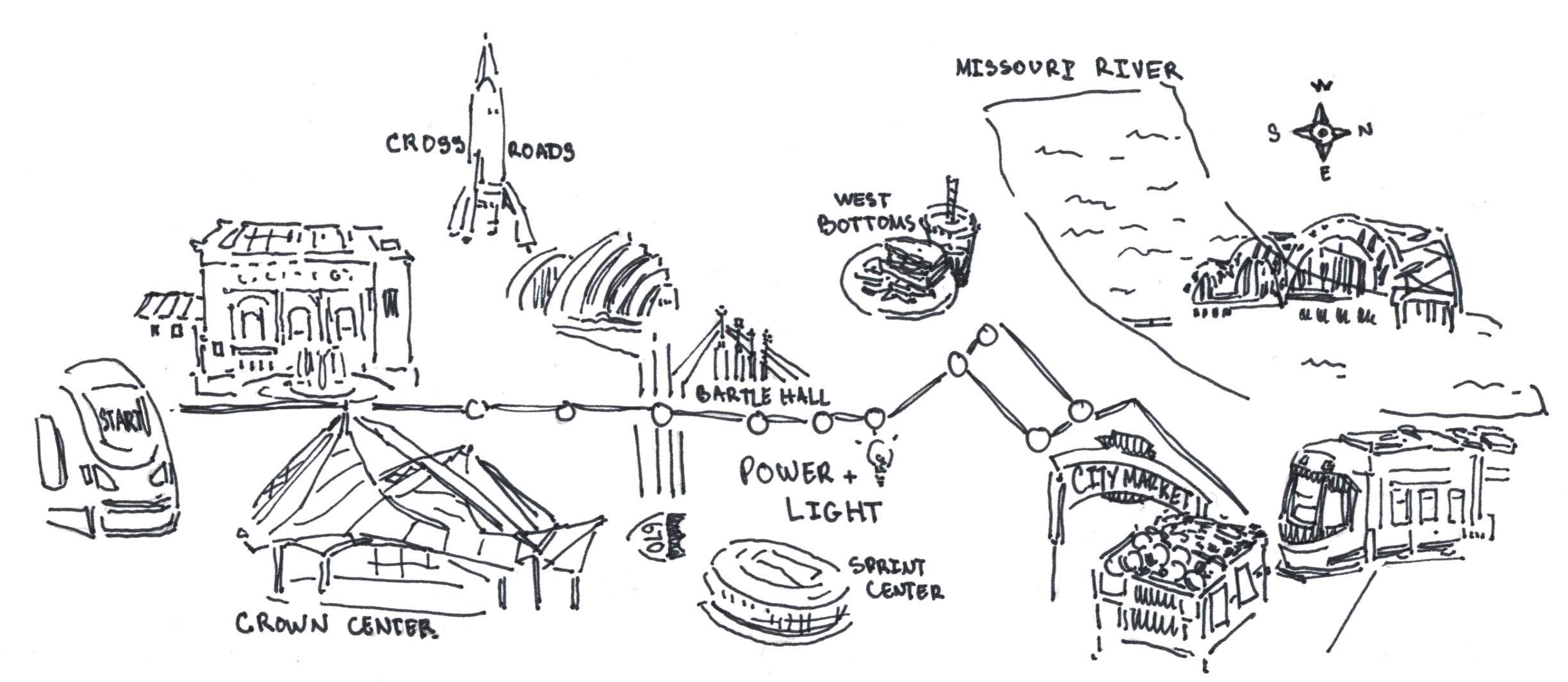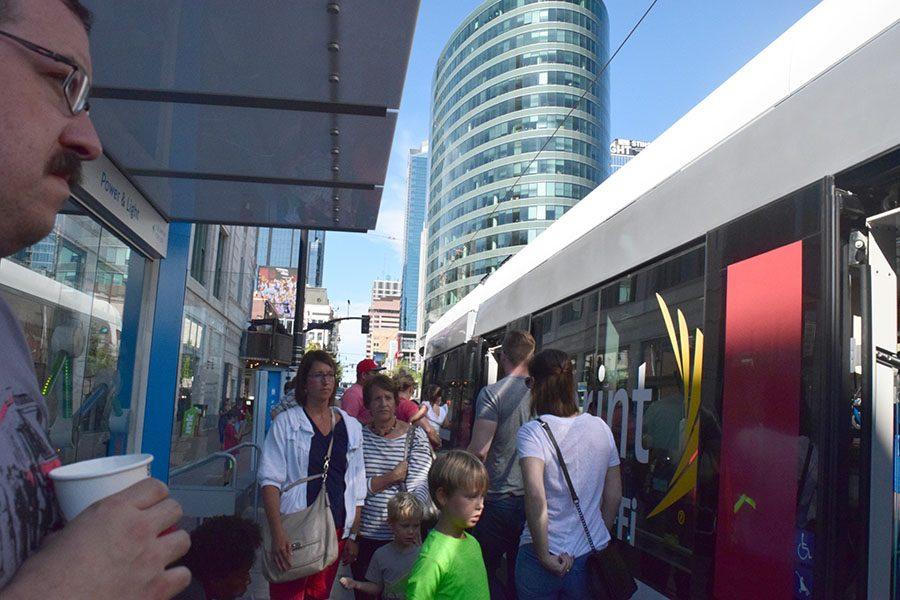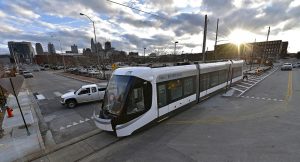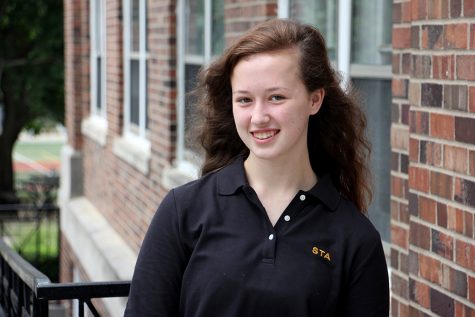KC Walking Tours educate natives, tourists alike
Tourists from Pennsylvania and residents of KC both learned about Kansas City’s history through new streetcar tour.
October 19, 2016
photos by Sophie Sakoulas, story by Anne Claire Tangen
To get to school every day, you would catch the bus from Swope Parkway to 47th and Troost. From there you would take the streetcar about five blocks to Rockhurst High School. In the summer, you always took the streetcar out to Swope Park. You might go to the zoo and then take a swim in one of their three pools.
This was what it was like for local Kansas City natives Rita and Mike Messina back in the 1940’ and 1950’s when streetcars were still popular and in service until buses replaced them in the late 1950’s.
KC Walking Tours Founder and Tour Guide Emily Allen promises to take Kansas Citians and those from out of town alike back to the early 20th century with “The Original Streetcar Tour.”
Allen describes the tour as “the only tour in Kansas City that goes down the entire streetcar line and touches on the history from every neighborhood.” Allen founded the Walking Tours because she “[loves] [her] neighborhood.”
Allen said these tours, including the streetcar tour, help people learn more about Kansas City.
“Often people living in Kansas City don’t know much about how the city started, the origin of neighborhoods, or the contributions of those (saints and sinners) from the past,” Allen said. “Walking tours is a perfect way to connect people to Kansas City through stories of the past.”
Launching a week after the streetcars themselves, the tour starts outside local River Market coffee shop and restaurant, The Opera House, and heads south down the streetcar line from there.

The tour takes three stops: the first at the Library District, where tour goers visit the Downtown Library and see the Midland and Main Street theater, the second at the Crossroads District to learn about the “revitalization” of downtown and the third at Union Station to hear about the history of this classic building.
Not only does the tour focus on the Kansas City’s past, but it touches on the present and future as well. The “revitalization” of downtown, defined by Allen as “bringing residents and business back to the urban core,” is incorporated throughout the tour because the streetcar is part of this project.
Allen noted that downtown Kansas City was a “once-thriving area.”
“The heart of the city, up until the birth of the interstate roadway system, were the downtown neighborhoods and nearby ‘suburbs’ such as the Midtown neighborhoods,” Allen said. “The interstate system not only broke up neighborhoods- the North End, now called Columbus Park and the Jazz District- but it also was the first nail in the coffin of a vibrant downtown.”
The Messina’s, who have lived in Kansas City all of their lives, felt that the streetcar tours brought back memories, although “so much has changed,” Rita said.
“It’s a totally different experience,” Mike noted. “The old ones were loud, even though they were electric streetcars. It was kind of like a train- the tracks were joined every 20-30 feet and as you went over the joint it clacked.”
Although Mike enjoyed the tour because Allen “told me things that I didn’t know or that I had forgotten and surprised me, and [we] [visited] certain places in the city that I just don’t go anymore,” he does think the streetcars are “unnecessary.”
Rita agreed. “I think it’s especially for visitors and tourists.”
According to tourists Corey and Rebecca from Pennsylvania, this may be the exact point of the revitalization of downtown. They felt they learned “a lot of interesting details about [Kansas City]” from taking the tour.
“We didn’t know a whole lot about [Kansas City] before visiting,” Corey said. “We got to see several things that we probably wouldn’t have seen on our own.”







